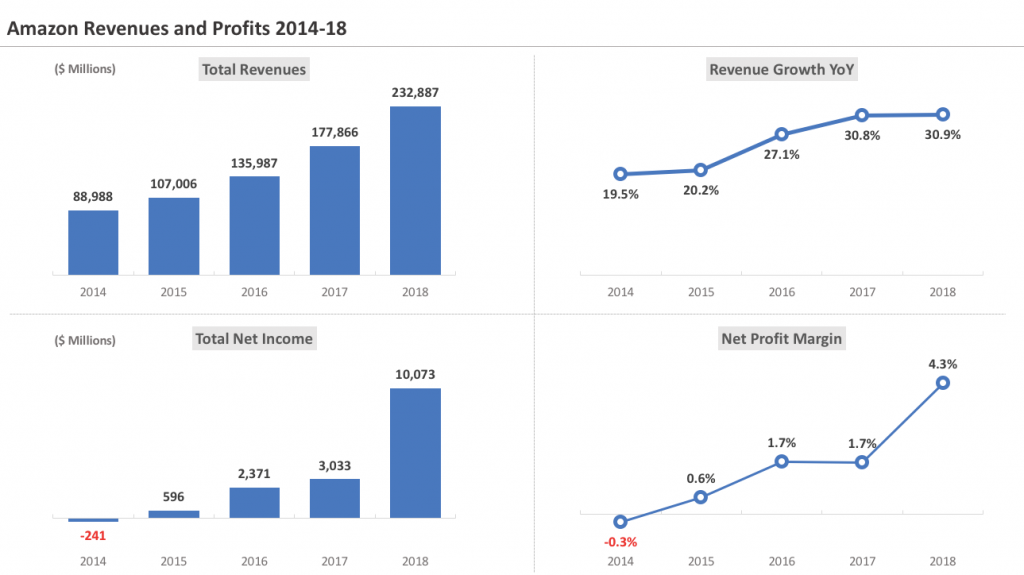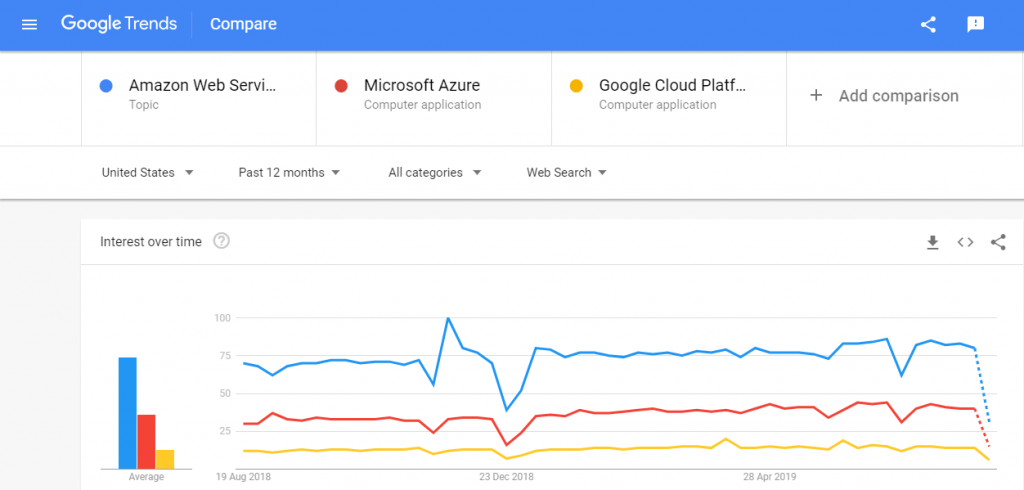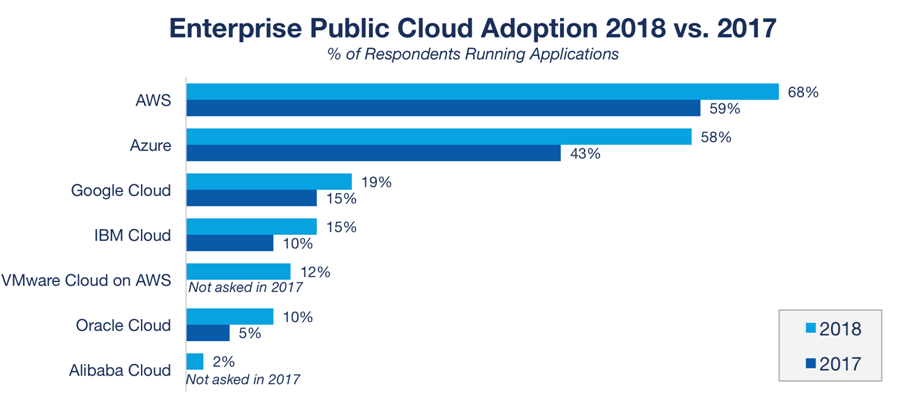10 min to read
What Is Cloud Computing And How Amazon Is Changing It?
Amazon Web Services (AWS), Google Cloud Platform (GCP), and Microsoft Azure are among the top players in the world of cloud computing. What is cloud computing? Before we proceed to the article, let us have an overview of cloud computing and AWS. Cloud computing is a general term for anything that involves hosted services over the Internet. These services are broadly divided into three categories: Infrastructure-as-a-Service (IaaS), Platform-as-a-Service (PaaS), and Software-as-a-Service (Sa
Amazon Web Services (AWS), Google Cloud Platform (GCP), and Microsoft Azure are among the top players in the world of cloud computing.

What is cloud computing?
Before we proceed to the article, let us have an overview of cloud computing and AWS.
Cloud computing is a general term for anything that involves hosted services over the Internet.
These services are broadly divided into three categories: Infrastructure-as-a-Service (IaaS), Platform-as-a-Service (PaaS), and Software-as-a-Service (SaaS). The name cloud computing was inspired by the cloud symbol that is often used to represent the Internet in flow charts and diagrams. Cloud storage for students.
A cloud service has three distinct characteristics:
- It is sold on demand, either for minutes or hours.
- It is elastic – A user can assign any amount of work that he/she wants.
- The services are fully managed by the provider. You just need a laptop and a good Internet connection.
Significant innovations in virtualization and distributed computing, as well as improved access to high-speed Internet, have accelerated interest in cloud computing.
A cloud can be private or public.
A public cloud sells services to anyone on the Internet.
A private cloud is a proprietary network or a data centre that supplies hosted services to a limited number of people.
Private or public, the goal of cloud computing is to provide easy, scalable access to computing resources and IT services.
Cloud computing deployment models
Public cloud
In the public cloud model, a third-party cloud service provider delivers the cloud service over the Internet. Public cloud services are sold on-demand, typically by the minute or hour, though long-term commitments are available for many services. Customers only pay for the CPU cycles, storage, or bandwidth they consume.
Private cloud
Private cloud services are delivered from a business’s data center to internal users. This model offers the versatility and convenience of the cloud while preserving the management, control, and security common to local data centers.
Internal users may or may not be billed for services through IT chargeback. Common private cloud technologies and vendors include VMware and OpenStack.
Hybrid cloud
A hybrid cloud is a combination of public cloud services and an on-premises private cloud, with orchestration and automation between the two. Companies can run a mission-critical workload or sensitive applications on the private cloud and use the public cloud to handle workload bursts or spikes in demand.
The goal of a hybrid cloud is to create a unified, automated, scalable environment that takes advantage of all that a public cloud infrastructure can provide, while still maintaining control over mission-critical data.
Cloud computing characteristics and benefits
Some of the benefits of cloud computing are:
- Self-service provisioning: End users can spin up compute resources for almost any type of workload on demand. This eliminates the traditional need for IT administrators to provision and manages computing resources.
- Elasticity: Companies can scale up as computing needs increase and scale down again as demands decrease. This eliminates the need for massive investments in local infrastructure, which may or may not remain active.
- Pay per use: Compute resources are measured at a granular level, enabling users to pay only for the resources and workloads they use.
- Workload resilience: Cloud service providers often implement redundant resources to ensure resilient storage and to keep users’ important workloads running often across multiple global regions.
- Migration flexibility: Organizations can move certain workloads to or from the cloud or to different cloud platforms – as desired or automatically for better cost savings or to use new services as they emerge.
Types of cloud computing services
Although cloud computing has changed over time, it has been divided into three broad service categories:
Infrastructure-as-a-Service (IaaS)
IaaS providers, such as AWS, supply a virtual server instance and storage, as well as APIs that enable users to migrate workloads to a VM. Users have allocated storage capacity and can start, stop, access, and configure the VM and storage as desired.
IaaS providers offer small, medium, large, extra-large, and memory- or compute-optimized instances, in addition to customized instances, for various workload needs.
Platform-as-a-Service (PaaS)
In the PaaS model, cloud providers host development tools on their infrastructures. Users access these tools over the Internet using APIs, web portals, or gateway software. PaaS is used for general software development and many PaaS providers host the software after it’s developed. Common PaaS providers include Salesforce’s Force.com, AWS Elastic Beanstalk, and Google App Engine.
Software-as-a-Service (SaaS)
SaaS is a distribution model that delivers software applications over the Internet — these applications are often called web services.
Users can access SaaS applications and services from any location using a computer or smartphone that has Internet access.
An example of a SaaS application is the VLC media player, used for media access and streaming videos online.
Security
Security remains a primary concern for businesses contemplating cloud adoption — especially public cloud adoption. Public cloud service providers share their underlying hardware infrastructure with numerous customers, as the public cloud is an environment where many users exist and operate.
This environment demands copious isolation between logical computing resources. At the same time, access to public cloud storage and compute resources is guarded by account login credentials.
Several organizations bound by complex regulatory obligations and governance standards are still hesitant to place data or workloads in the public cloud for fear of outages, loss, or theft.
However, this resistance is fading, as logical isolation has proven reliable, and the addition of data encryption and various identity and access management tools has improved security within the public cloud.
What is Amazon Web Services (AWS)?
Amazon Web Services (AWS) is a comprehensive, evolving cloud computing platform provided by Amazon. It provides a mix of IaaS, PaaS, and SaaS offerings.
AWS launched in 2006 from the internal infrastructure that Amazon.com built to handle its online retail operations. AWS was one of the first companies to introduce a pay-as-you-go cloud computing model that scales to provide users with computing, storage, or throughput as needed.
Amazon Web Services provides services from dozens of data centers spread across availability zones (AZs) in regions across the world. An AZ represents a location that typically contains multiple physical data centers, while a region is a collection of AZs in geographic proximity connected by low-latency network links.
An AWS customer can spin up virtual machines (VMs) and replicate data in different AZs to achieve a highly reliable infrastructure that is resistant to failures of individual servers or an entire data center.
More than 100 services comprise the AWS portfolio, including those for computing, databases, infrastructure management, application development, and security.
AWS offers a pay-as-you-go model for its cloud services, either on a per-hour or per-second basis. There is also an option to reserve a set amount of compute capacity at a discounted price for customers who prepay in whole, or who sign up for one- or three-year usage commitments.
Amazon’s popular and fastest services
Popular services
The cloud platform’s popular services include Amazon Virtual Private Cloud, AWS Data Transfer, Amazon Simple Storage Service, Amazon Relational Database Service, and Amazon Simple Email Service.
Fastest services
Amazon’s fastest services include Amazon Athena, Amazon Elastic Container Service for Kubernetes, AWS OpsWork, Amazon EC2 Container Service, and GuardCuty.
AWS’s development
Also, Amazon Web Services is launching its analytics and forecasting services. Hence it is going to be a full business package.
AWS’ reach continues to expand in multiple directions, but perhaps the one to watch the most is the database market. AWS is capturing more database workloads and has emphasized its customer wins. A move to launch a fully managed document database takes direct aim at MongoDB. Should AWS capture more enterprise data, it will be entrenched for decades to come as it continues to evolve services and sell them to you.
AWS statistics
Amazon Web Services (AWS) has an estimated 2018 annual revenue of $25.65 billion.
For AWS, 2019 is a year of investment.
Since the establishment of AWS, it still maintains a very strong growth rate and satisfactory delivery to customers. The company primarily aims towards providing customers with an incredible experience.
AWS is the leader in infrastructure-as-a-service and it is also excelling in artificial intelligence, augmented reality, and analytics. AWS is far more than the IaaS platform these days. It grew 45% in the fourth quarter of 2018, and they have maintained this since last year.
Amazon Web Services has a wide range of partners and developers inside its ecosystem. It is the beachhead for enterprise players before they expand to a multi-cloud approach.
The question now arises, how much will AWS extend its reach? AWS is a potential threat to Oracle in databases and many companies. Moreover, AWS has a strong cloud hybrid cloud strategy with its VMware partnership.

AWS’ strategy was evident at its re: Invent conference. They introduced a package of services, new products, and developer goodies that was hard to track. There is a good growth slope in the field of artificial intelligence. As AWS becomes a machine learning platform, it also pitches up its sales.
In the first quarter of 2019, Amazon’s profits were again powered by AWS. CFO Brian Olsavsky said AWS now has an annualized run rate of over $30 billion. He highlighted AWS’s customer wins for the quarter, including deals with Volkswagen, Ford, Lyft, and Gogo.
Top companies using AWS
- Netflix – $19 million
- Twitch – $15 million
- Linkedin – $13 million
- Facebook – $11 million
- Turner Broadcasting – $10 million
- BBC – $9 million
- Baidu – $9 million
- ESPN – $8 million
- Adobe – $8 million
Why companies use cloud computing
Talking about business, cloud computing finds good applications there. It could potentially lower expenses on hardware and IT. Also, it makes upgrades flawless.
For individuals, the cloud acts as a backup store and they don’t have to fear any unexpected hard drive crash.
Cloud computing is also integral to the Internet of Things (IoT), which brings everything from cars and home appliances to medical and farm equipment into the connected world.
Scope of cloud computing
This is the reason why many small businesses and tech giants are opting for cloud computing technologies. Matter of fact, they are including these services at the inception.
So this means that these companies need cloud-computing engineers. If you want to make your career in this, if all goes well, there is a high potential for growth, both financially and professionally.
AWS vs Azure vs GCP: What’s going on?

Amazon Web Services
With a vast toolset that continues to grow exponentially, Amazon’s capabilities are unmatched. Yet its cost structure can be confusing, and its singular focus on the public cloud rather than the hybrid cloud or private cloud means that interoperating with your data center isn’t AWS’s top priority.
Microsoft Azure
A close competitor to AWS with an exceptionally capable cloud infrastructure. If you’re an enterprise customer, Azure speaks your language – few companies have the enterprise background (and Windows support) as Microsoft. Azure knows you still run a data center, and the Azure platform works hard to interoperate with data centers; the hybrid cloud is its true strength.
Google Cloud Platform
A well-funded underdog in the competition, Google entered the cloud market later and doesn’t have the enterprise focus that helps draw corporate customers. But its technical expertise is profound, and its industry-leading tools in deep learning and artificial intelligence, machine learning, and data analytics are significant advantages.
Strategies
Amazon
AWS had the fastest growth in 2018. Its sales jumped to an awesome 50%, making a total of $26 billion.
Cloud computing is on the rise, and AWS is topping the charts since its inception in 2006. Amazon depends heavily on the cloud. The cloud comprises of 60% of Amazon’s total operating income of $12.4 billion in 2018, despite sales comprising only 11% of the company’s total revenue.
AWS delivered an operating income of $7.3 billion. This is 60% more than 2017’s $4.3 billion. Moreover, operating margins grow by almost 400 basis points to 28.4%. This shows up how thin Amazon’s margins are in its core e-commerce business.
Amazon’s non-cloud business had an operating income of $5.1 billion, lesser than its cloud operating income. Also, the operating margin was too low, only 2.4%.
By now, you can clearly observe that Amazon’s corporate business relies on its cloud services. Should the cloud services fail, the e-commerce giant will need to find a new growth engine quickly to drive the profits of the company.
It is estimated that AWS will contain 52% of the cloud market, with Azure having 21% and Google being 18%.
Microsoft
Microsoft’s cloud growth has been impressive, but the business is part of a more balanced business portfolio compared to Amazon. Operating margins for Microsoft were about 35.7%, up about 200 basis points from the year prior. Microsoft’s two other units – Are productivity and Business Processes and More Personal Computing. They represent 32% and 38% respectively. The lower percentage of operating income may give Microsoft the ability to be more patient with its approach to growing its cloud business. However, Microsoft needs to continue growing cloud sales to avoid total revenue from halting or slowing too much.
For Google, cloud computing is not a major contributor to its business and is not likely to be anytime soon. Google makes around $4.7 billion a year with its cloud services. The company wants to speed up work on the cloud platform. In April 2019, Google announced its new service named Anthos. This service allows its customers to move their computing workloads between its cloud platform, its own data centers, and the competing clouds of Amazon and Microsoft.

For more on AWS, read this article.
FAQ
Q1. What are the 5 key features of Cloud computing?
Ans- This cloud model is composed of five essential characteristics:
- On-demand self-service.
- Broad network access.
- Resource pooling.
- Rapid elasticity.
- Measured Service.
Q2. What are the principles of Cloud Computing?
Ans- The six principles - detailed in the recently published ISACA publication Guiding Principles for Cloud Computing Adoption and Use - include enablement, cost/benefit, enterprise risk, capability, accountability and trust.
🚀 Try Codersera Free for 7 Days
Connect with top remote developers instantly. No commitment, no risk.
Tags
Trending Blogs
Discover our most popular articles and guides
10 Best Emulators Without VT and Graphics Card: A Complete Guide for Low-End PCs
Running Android emulators on low-end PCs—especially those without Virtualization Technology (VT) or a dedicated graphics card—can be a challenge. Many popular emulators rely on hardware acceleration and virtualization to deliver smooth performance.
Android Emulator Online Browser Free
The demand for Android emulation has soared as users and developers seek flexible ways to run Android apps and games without a physical device. Online Android emulators, accessible directly through a web browser.
Free iPhone Emulators Online: A Comprehensive Guide
Discover the best free iPhone emulators that work online without downloads. Test iOS apps and games directly in your browser.
10 Best Android Emulators for PC Without Virtualization Technology (VT)
Top Android emulators optimized for gaming performance. Run mobile games smoothly on PC with these powerful emulators.
Gemma 3 vs Qwen 3: In-Depth Comparison of Two Leading Open-Source LLMs
The rapid evolution of large language models (LLMs) has brought forth a new generation of open-source AI models that are more powerful, efficient, and versatile than ever.
ApkOnline: The Android Online Emulator
ApkOnline is a cloud-based Android emulator that allows users to run Android apps and APK files directly from their web browsers, eliminating the need for physical devices or complex software installations.
Best Free Online Android Emulators
Choosing the right Android emulator can transform your experience—whether you're a gamer, developer, or just want to run your favorite mobile apps on a bigger screen.
Gemma 3 vs Qwen 3: In-Depth Comparison of Two Leading Open-Source LLMs
The rapid evolution of large language models (LLMs) has brought forth a new generation of open-source AI models that are more powerful, efficient, and versatile than ever.